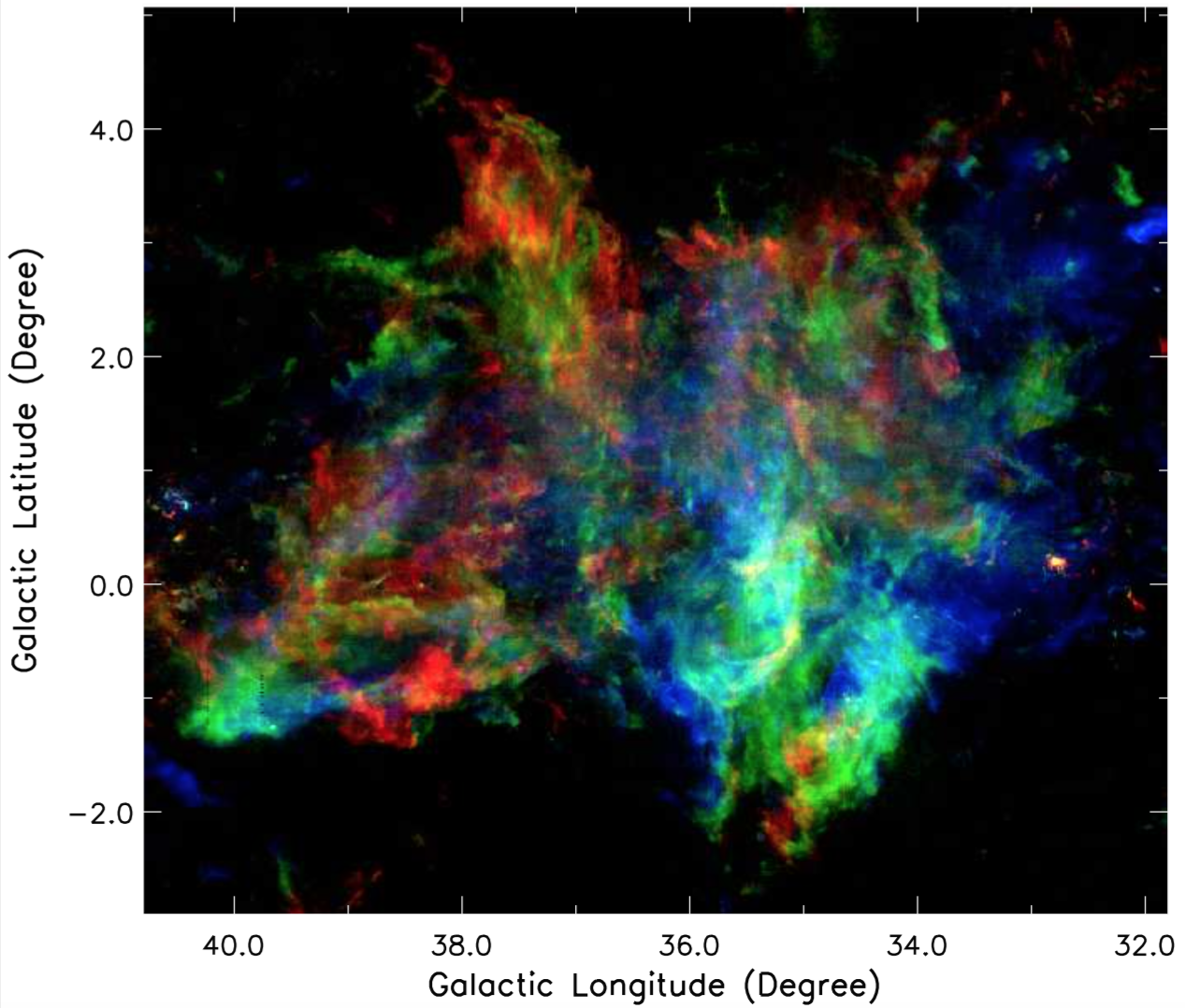Local Molecular Gas Toward the Aquila Rift
The Milky Way Imaging Scroll Painting (MWISP) project is a large-scale, unbiased, and high-sensitivity triple CO isotope line survey toward the northern Galactic plane (e.g., l=-10 deg to 250 deg and |b|<5 deg) using the 13.7 m millimeter-wavelength telescope of Purple Mountain Observatory.
Recently, the researchers of the MWISP group investigate the local molecular clouds (MCs) toward the Aquila Rift region based on a ~250 square degrees CO observations. Many interesting MC structures, such as filaments, shells, and finger-like features, are well unveiled according to the high dynamic range of the CO mapping. Especially, an ~80 pc long giant molecular filament (GMF G044.0-02.5) is revealed, as well as the systematic velocity field. We named the object as the River Cloud because of many stream-like features within the long GMF (i.e., networks of tiny filaments or fibers in the cloud; see Fig. 1). Another intriguing case is the Phoenix Cloud (GMC G036.0+01.0, see Fig. 2), which has a total mass of ~2x10^5 Msun.
Further studies show that MCs may form from pre-existing atomic gas, in which large-scale converging flows are crucial for the accumulation of material. When atomic gas is assembled by large-scale converging flows, collision between these filamentary flows becomes inevitable and will lead to gas compression. Furthermore, in the environment of pressure enhancement by colliding flows, MC formation is probably rapid due to dynamical processes and various instabilities.


Fig. 2 Phoenix Cloud (GMC G036.0+01.0) at the distance of ~560--670 pc from Su et al. 2020, ApJ, 893, 91. The blue, green, and red colors indicate the integrated CO emissions in the interval of [11.0, 13.0] km/s, [13.0, 15.0] km/s, and [15.0, 17.0] km/s. (Image by SU Yang)
The study is supported by the National Key R&D Program of China (2017YFA0402700) and the Key Research Program of Frontier Sciences of CAS (QYZDJ-SSW-SLH047). The paper is published in The Astrophysical Journal.